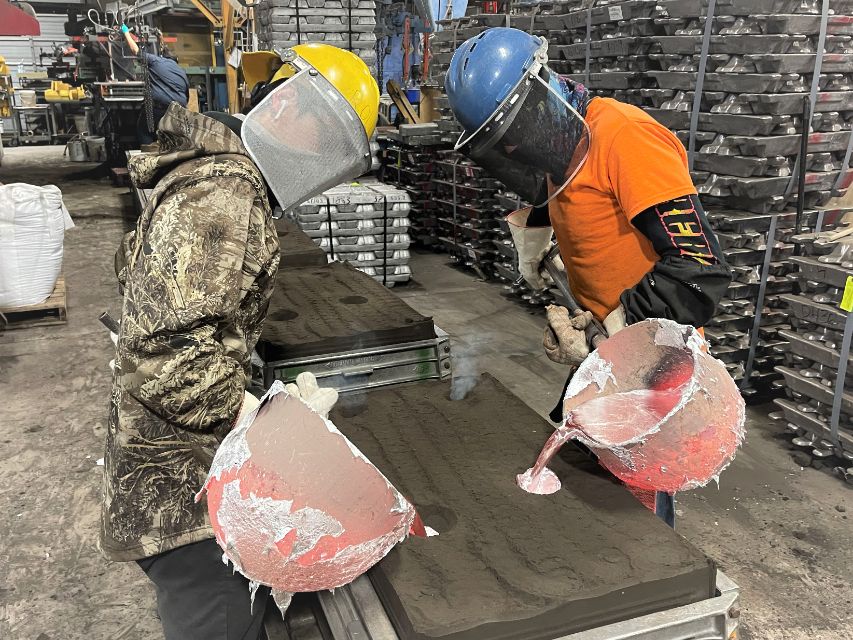An Overview of Green Sand Casting
Introduction to Green Sand Casting:Green sand casting is a foundry process that utilizes a mold made from green sand, a mixture of sand and cement. Contrary to its name, the term "green" does not refer to the color but signifies that the metal is poured into an uncured or 'green' mold. This term draws parallels to greenwood, suggesting wood with a high water content. Key components of green sand include sand, clay, sludge, anthracite, and water, with sand being the primary component. This technique is a straightforward, reliable, and widely employed method in metal casting.
Green Sand Casting Process:The mold is formed by compacting prepared sand around a pattern held in a flask. The patterns are then removed, leaving behind the mold cavity into which molten metal will be poured. Molds are crafted in two halves – the cope (upper portion) and the drag (lower portion) – with the parting line marking the boundary between them. Cores, made from sand bonded with resins and baked for strength, can be inserted to shape the internal structure of hollow castings. Chills, embedded in the mold cavity wall, control the solidification process.
Risers, serving as molten metal reservoirs, ensure adequate feeding throughout casting solidification, acting as heat sources to promote directional solidification. Molten metal enters the mold through a sprue and is distributed through a system of gates and runners.

What is Green Sand?Green sand is a mixture comprising sand (75-85% by mass), bentonite or kaolinite clay (5-11% for binding), water (2-4%), sludge (3-5% as filler), and anthracite (<1% as a carbonaceous additive). Three main types of sand—silica-based, chromite-based, or zircon-based—are used based on casting material requirements. Additional inorganic compounds may be included based on the casting material, providing crucial heat capacity due to the high temperatures involved in casting. The porous nature of green sand facilitates gas escape during mold production.
Green Sand Casting Process:
How Does It Work?
The process involves six steps:
1. Sand is placed over a pattern.
2. The pattern shape is formed into the sand using a flask as a mold.
3. The pattern is removed.
4. Molten metal is poured into the mold.
5. Allow for cooling/solidification.
6. The finished casting is removed from the mold.
During casting, latent heat from the molten metal cures the mold in situ. Once cooled, the casting is extracted from the mold. Molds are often ground down and reused, particularly if constructed with more expensive sand varieties. However, sand recycling is crucial as significant amounts are landfilled in the US and UK for every tonne of cast metal.
Advantages of Green Sand Casting:
Easy production process compared to other methods.
High production rate, with potential for large daily outputs.
Low production costs due to simple casting processes and low material expenses.
Disadvantages of Green Sand Casting:
Common defects such as sand residue, sand holes, air holes, and shrinkage.
Potential for a rough surface due to the simplicity of the production process.
Limited size accuracy, with size tolerances typically in the range of CT11-CT12.
Dongrun Casting have 20000 square meters facility houses and 200 production & test equipment, From quotation and tooling design to casting and finished machining, we can work with you at every stage. We serves wide range of industries-from Fortune 500 corporations to small and midsize OEMs. Our products includes: Automotive&Trucking, Electric Utility & Communications, Metering System, Hydraulic Industry, Medical Devices, Lighting, Fuel and Gas Pressure, Furniture parts.
More Details : www.dongruncasting.com
